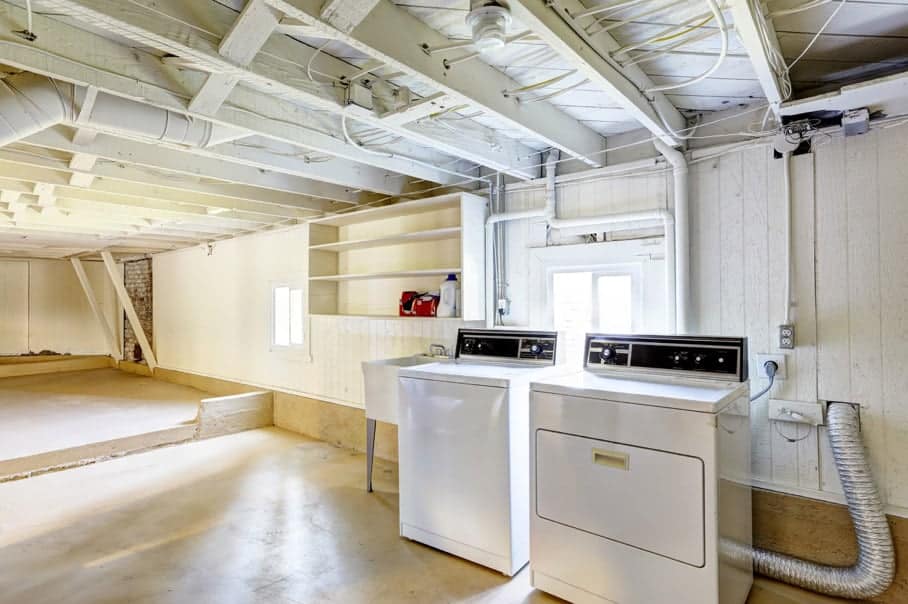
Basement underpinning is a significant undertaking, a process that can feel complex and raise a lot of questions for homeowners. Whether you’re noticing concerning signs in your foundation or exploring the possibility of maximizing your basement’s potential, understanding the ins and outs of underpinning is crucial. That’s why we’ve compiled some of the most frequently asked questions about basement underpinning and tapped into the expertise of seasoned professionals to provide you with clear and concise answers. Let’s dive in and shed some light on this important structural solution.
Question 1: What exactly is basement underpinning and why might my home need it?
Answer: Basement underpinning is the process of strengthening and stabilizing an existing building’s foundation by extending it deeper or wider. Essentially, we’re creating a more robust base for your home. Your home might need underpinning for several reasons:
Shallow Foundation:
Older homes, in particular, may have been built with foundations that are not as deep as current building codes require or are ideal for the local soil conditions.
Unstable Soil:
If your home is built on soil that is prone to shifting, expanding, or contracting (like certain types of clay), underpinning can provide added stability.
Need for a Lower Basement Floor:
If you’re looking to increase the ceiling height and usability of your basement, underpinning allows for the excavation and lowering of the existing floor.
Addressing Existing Foundation Issues:
Underpinning can be a necessary solution to stabilize a foundation that has already experienced settling, cracking, or other forms of damage.
Question 2: How do I know if my home needs underpinning? What are the warning signs?
Answer: Several telltale signs can indicate potential foundation issues that might necessitate underpinning:
Cracks in Walls and Ceilings:
Look for widening cracks, especially diagonal or stair-step cracks along walls or where walls meet ceilings.
Uneven or Sloping Floors:
If you notice furniture rolling on its own or a visible slope in your floors, it could indicate foundation movement.
Sticking Doors and Windows:
Foundation shifts can warp door and window frames, causing them to stick or become difficult to open and close.
Water Intrusion in the Basement:
Persistent dampness, puddling, or visible water seepage can be a sign of foundation cracks allowing moisture to enter.
Gaps Around Door and Window Frames:
Noticeable gaps between the frames and the surrounding walls can indicate foundation movement.
Exterior Cracks in the Foundation:
Visible cracks in the concrete foundation walls themselves are a serious concern.
Question 3: What is the general process of basement underpinning? What can I expect?
Answer: While the specifics can vary, a typical underpinning project involves these general steps:
1. Assessment and Planning:
A thorough inspection by a structural engineer or experienced underpinning contractor to determine the best approach.
2. Permitting:
Obtaining the necessary permits from your local building authorities.
3. Excavation:
Working in sections, the soil around and beneath the existing foundation is carefully excavated.
4. Formwork and Reinforcement:
Forms are built, and steel reinforcement bars (rebar) are installed to strengthen the new concrete.
5. Pouring Concrete:
High-strength concrete is poured into the forms, extending the foundation to the desired depth or width.
6. Curing:
The concrete is allowed to cure properly to achieve maximum strength.
7. Backfilling:
Once the concrete has cured, the excavated soil is carefully backfilled.
Expect some level of noise and disruption during the excavation and concrete pouring phases. Professional contractors will strive to minimize inconvenience and maintain a safe work site.
Question 4: How long does a typical underpinning project take?
Answer: The duration of an underpinning project can vary significantly depending on factors such as the size of your home, the depth of underpinning required, soil conditions, and accessibility. A smaller project might take a few weeks, while a larger or more complex undertaking could take several weeks to a couple of months. Your contractor will be able to provide a more accurate timeline after assessing your specific situation.
Question 5: How much does basement underpinning typically cost?
Answer: It’s difficult to provide a specific cost without assessing your individual needs. The cost of basement underpinning is influenced by several factors, including the depth and extent of the underpinning, the size of your home, the type of soil, site accessibility, and local labor rates. While it is a significant investment, it’s crucial to view it as a long-term solution that protects your home’s structural integrity, prevents more costly future repairs, and can significantly increase your property value and usable living space. Obtain detailed quotes from reputable contractors to understand the potential investment for your project.
Question 6: Will underpinning damage my existing structure or landscaping?
Answer: Professional underpinning contractors take great care to minimize any potential damage to your existing structure and landscaping. They typically work in carefully planned sections to ensure the stability of your home throughout the process. While some excavation around the perimeter is necessary, experienced contractors will take measures to protect your property and will often include restoration of the disturbed areas in their scope of work. Discuss your landscaping concerns with your contractor beforehand.
Question 7: Is underpinning a permanent solution? Will I have foundation problems again in the future?
Answer: Yes, when performed correctly by experienced professionals, underpinning provides a long-term and permanent solution for stabilizing your foundation and addressing the specific issues it was designed to correct. However, it’s important to maintain proper drainage around your home to prevent future water-related foundation issues that are not directly related to the underpinned areas. Regular inspection of your foundation and addressing any new concerns promptly is always a good practice.
Question 8: Do I need permits for basement underpinning?
Answer: Yes, in most jurisdictions, including Vaughan, Ontario, permits are typically required for basement underpinning. This ensures that the work meets local building codes and safety standards. Reputable contractors will be knowledgeable about the local permitting process and will often handle the application and acquisition of the necessary permits on your behalf.
Question 9: How do I choose a reputable contractor for basement underpinning? What should I look for?
Answer: Choosing the right contractor is crucial for a successful underpinning project. Look for the following:
Experience:
Choose a contractor with a proven track record specifically in basement underpinning. Ask for references and review their past projects.
Insurance and Licensing:
Ensure they have adequate liability insurance and are properly licensed to operate in your area.
Detailed Quotes:
Obtain multiple detailed quotes that clearly outline the scope of work, materials, and costs.
Understanding of Local Codes:
They should be familiar with and adhere to local building codes and permitting requirements.
Communication and Professionalism:
Choose a contractor who communicates clearly, answers your questions thoroughly, and demonstrates professionalism.
Question 10: What are the benefits of underpinning beyond just structural stability?
Answer: While the primary benefit of underpinning is enhanced structural stability, it can offer several other advantages:
Increased Basement Height:
Lowering the basement floor through underpinning can create significantly more usable and comfortable living space.
Potential for More Usable Space:
With increased headroom and a stable foundation, you unlock the potential for finishing your basement into valuable living areas.
Improved Property Value:
A structurally sound foundation is a major selling point and can significantly increase the overall value of your home.
We hope these answers have shed some light on the process and benefits of basement underpinning. Making informed decisions about your home’s foundation is essential for its long-term health and your peace of mind. If you have further questions or would like to discuss your specific situation, don’t hesitate to reach out to experienced professionals in your area for personalized advice.








